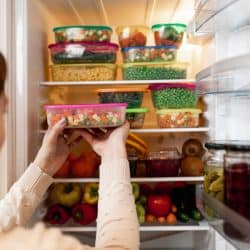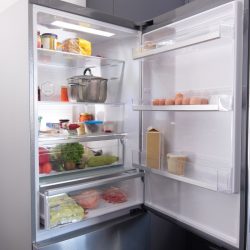Figuring out what is making your kitchen appliances malfunction can feel impossible sometimes. Have you started to notice water leaking inside your refrigerator and don't know what is causing it or how to fix it? Well, we've done plenty of digging and have the answer waiting here for you. Let's check this out.
Most times, water leaking inside a refrigerator is due to a clogged defrost drain. Luckily, this shouldn't be too difficult to find and is one of the easier issues to fix in your fridge, so almost anyone can do it.
That said, you will need to clean out your appliance's defrost drain thoroughly and keep an eye on it moving forward to prevent any leaking from happening again, so regular upkeep is essential.
As we begin, we will cover all things refrigerators and discuss how to stop water from leaking inside of yours. Whether this happens all the time or you've never noticed a leak before, we're here to offer some help. With that said, let's dive right into this topic!
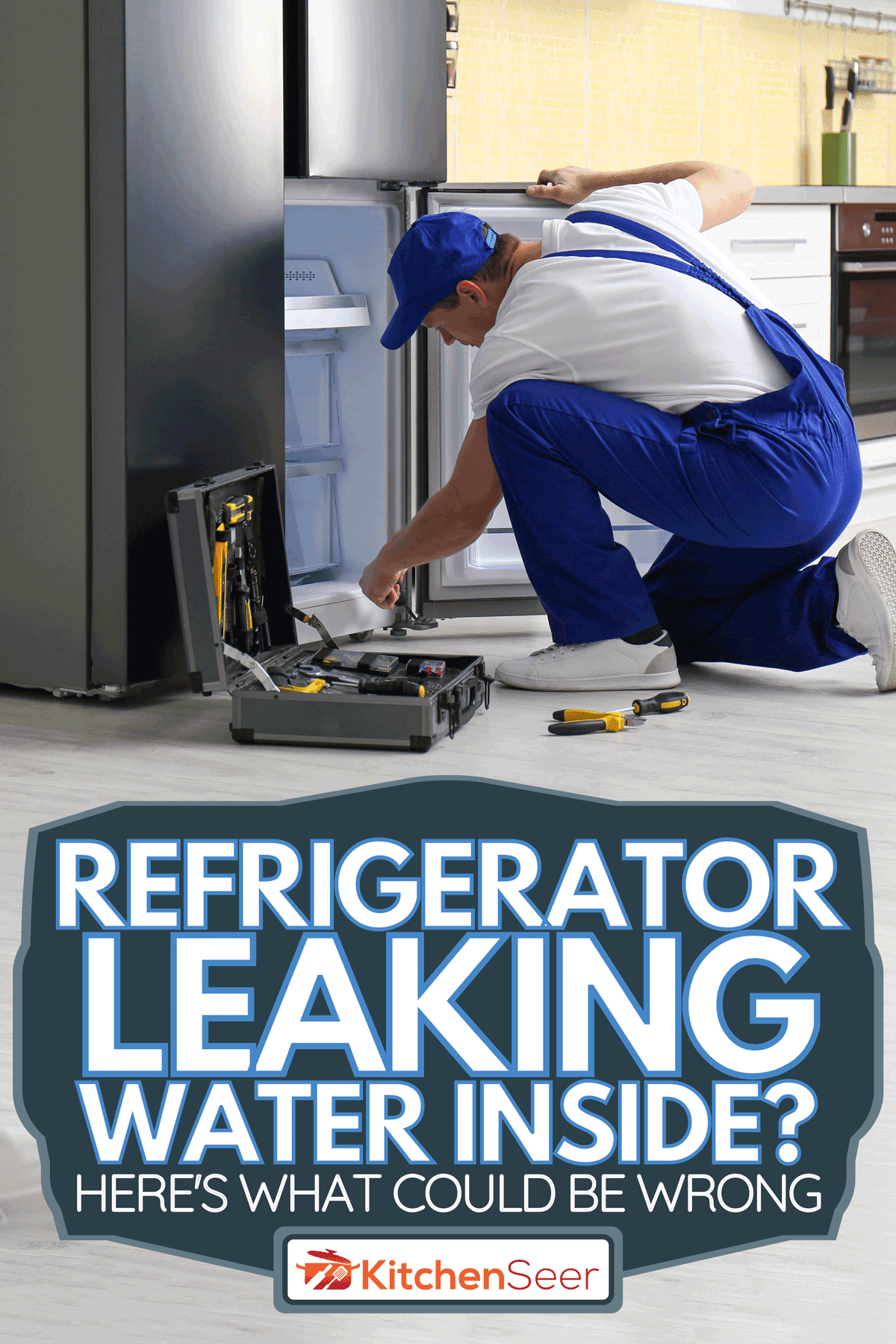
How Do I Stop My Fridge From Leaking Water?
For anybody struggling to keep their refrigerator leak-free, take a look at your appliance's defrost drain. This drain is typically in your fridge's built-in freezer towards the lower back and looks like a small hole.
Once you make it to the defrost drain, you want to use either a Q-tip or a small, pointed object to remove any debris that may be inside of or around this drain. Once you do that, excess water will be able to make its way out of your fridge into its lower drain tube without leaking, so this should be an easy fix.
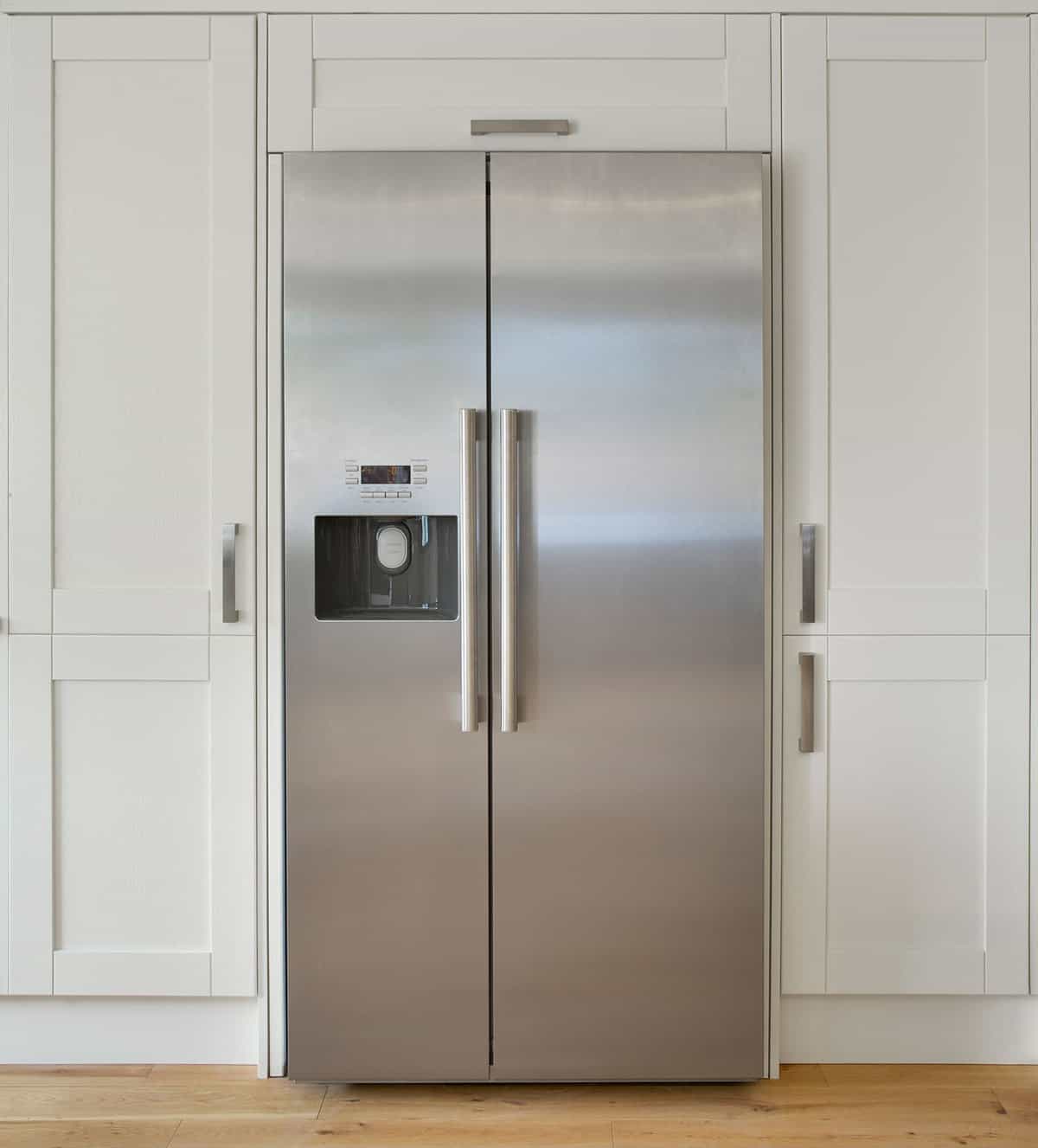
How Do You Test The Defrost Drain On A Refrigerator?
If you want to test your fridge's defrost drain, this shouldn't be too hard. To start:
- Locate the defrost drain in your refrigerator's built-in freezer.
- Check the surrounding area for built-up ice or debris.
- Pour a small amount of water into the defrost drain, and if it goes down easily, no further action is needed.
One thing to note, If ice is present, grab a hairdryer and use it on its lowest setting for about 5-10 minutes to clear your drain up.
Is The Defrost Drain Always In The Freezer?
Yes, the defrost drain in a fridge will always be located in the freezer. This is because its primary function is to drain excess water from your refrigerator freezer's ice tray and main compartment.
On top of that, the defrost drain in a refrigerator will usually run out of the back of your appliance through a tube and then out of your fridge below, so you don't ever really need to see or access it.
What Happens If A Freezer Drain Is Clogged?
If the drain in a freezer becomes clogged, chances are a leak will develop. Like we covered, a blocked defrost drain will result in water pooling and even dripping down into your main refrigerator compartment, which can create a mess.
Your freezer might also end up with a thick layer of ice forming at its bottom, which not only is hard to defrost but will make the chances of a significant leak even more likely. Again, this is easy to prevent, so try to regularly clean and inspect your fridge's defrost drain to prevent issues from starting.
How Do I Keep My Defrost Drain From Clogging?
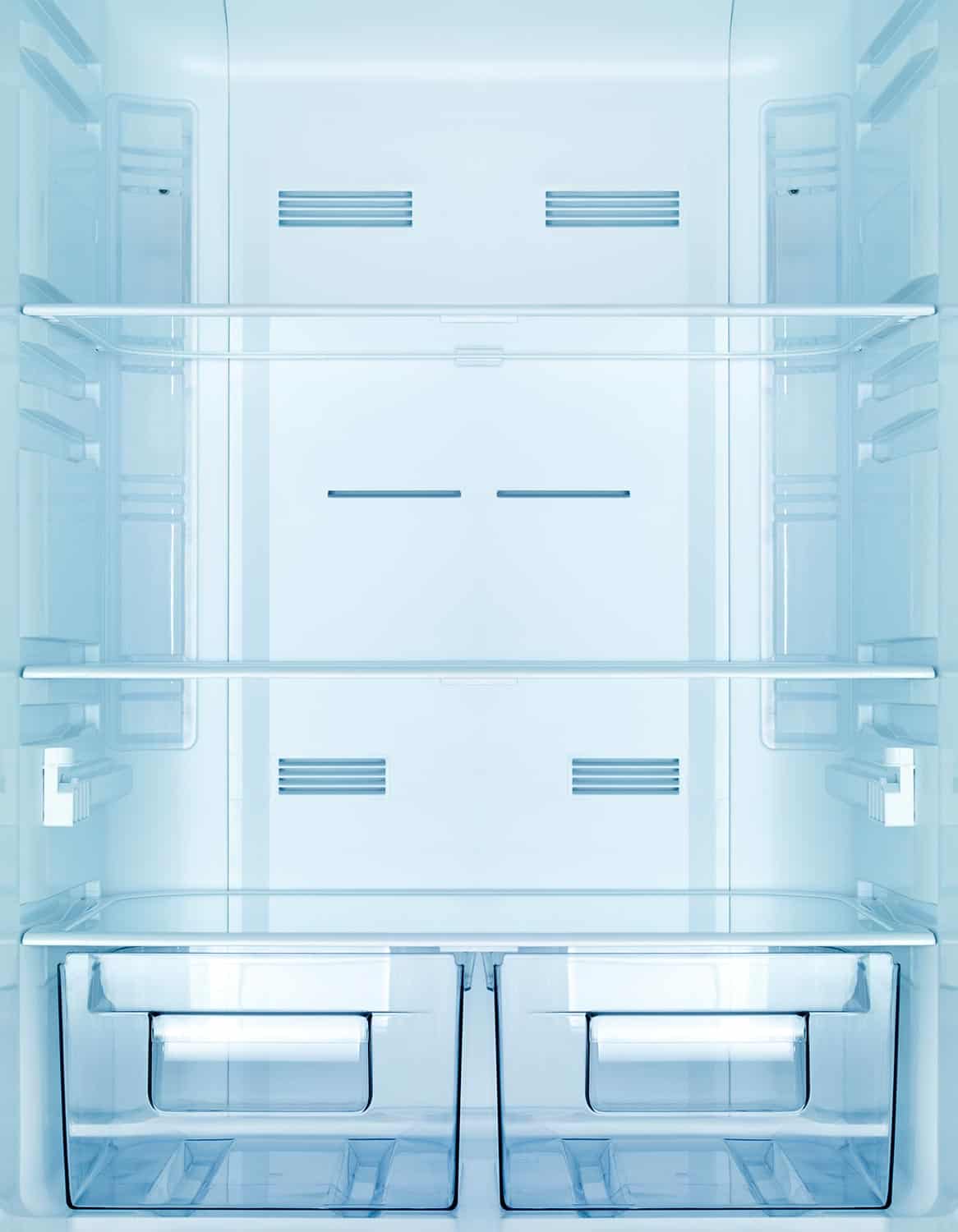
In general, the best way to avoid a clogged defrost drain is to keep your fridge at a moderate temperature. Ideally, this should be between 33 and 39 degrees Fahrenheit for the main compartment of your refrigerator and right at zero degrees in the freezer.
Even though a super cold fridge may seem like it's a great thing, setting the temperature too low can cause more problems for your appliance and, ultimately, food.
How Do You Fix A Frozen Freezer Drain?
If your refrigerator was set too cold and you're now stuck with a frozen drain, fixing this won't be super tricky. To start, we recommend grabbing a turkey baster, filling it with hot water, and then inserting it into your freezer's drain hole.
You should only need to repeat this process a few times, eventually melting any frozen water that might be stuck in your freezer drain/tube.
Where Is The Drain On A Refrigerator?
The drain on a refrigerator will typically be towards the bottom of your appliance, just above the floor. This is where any excess water from your freezer will go and then filter out through a tube.
With that said, every refrigerator will be a little different, so if you're having trouble locating your appliance's drain, we suggest reaching out to the manufacturer.
How Do You Unblock A Refrigerator Drain Tube?
If you suspect the drain tube on your fridge has a blockage, it's essential to fix it ASAP. To do this, you want to insert a plumbing snake into the tiny hole inside your freezer that we mentioned earlier.
You should only need to move the snake up and down a few times before your tube's blockage starts to clear up, although bigger clogs may take some extra patience. Furthermore, you can always try our turkey baster and hot water suggestion if you don't have a snake to use, although this won't always be as effective.
Where Does A Fridge Drain To?
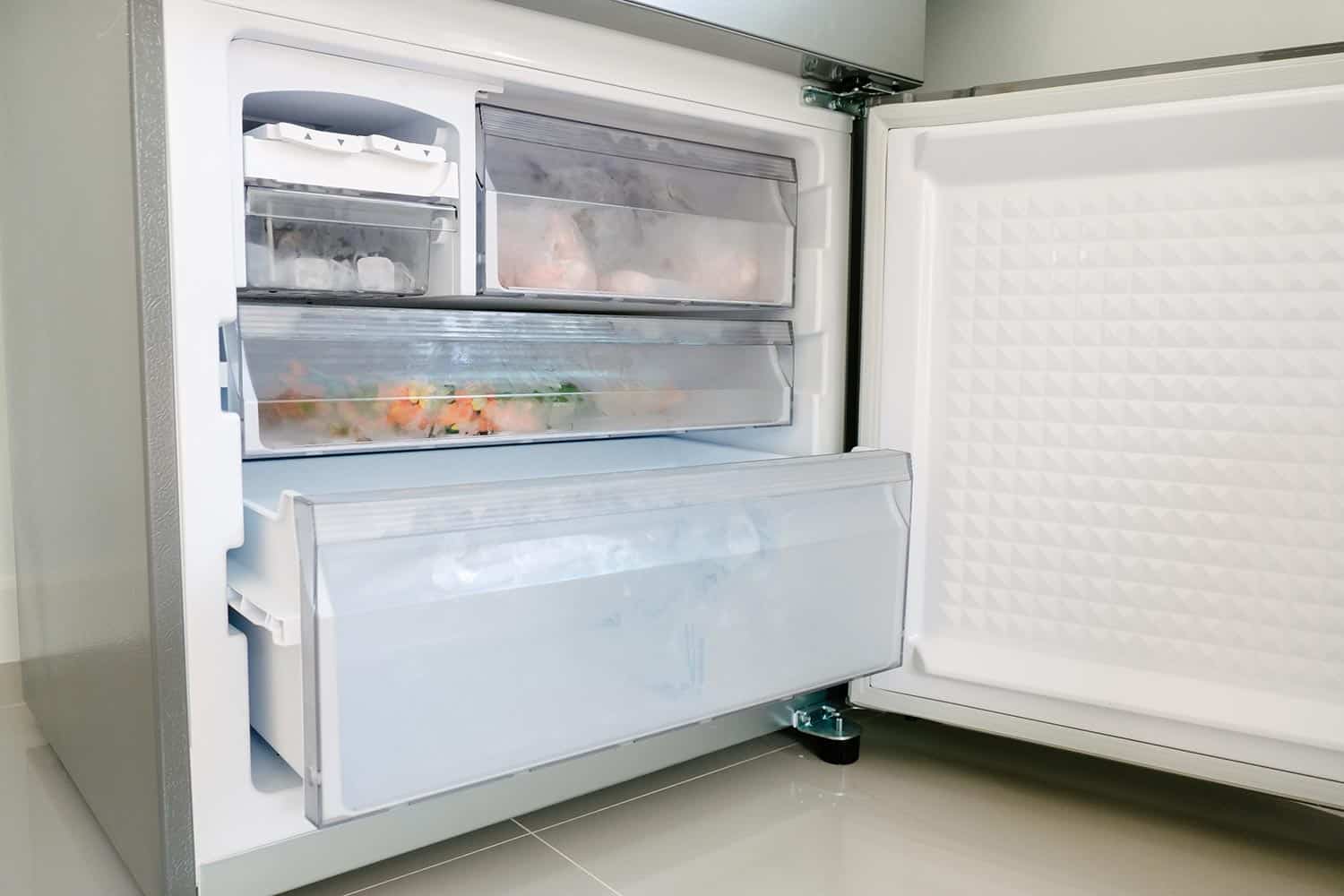
Considering how much water goes into your refrigerator's drain, it's always a mystery as to where it goes. Generally, your refrigerator will have a pan underneath it, which will hold excess water from its drain, where it will eventually evaporate.
Of course, this can sometimes lead to water leaking or pooling inside/below your refrigerator if a clog happens, so the pan design isn't always flaw-free. Again, this is pretty standard regardless of appliance brand, so chances are your refrigerator also has a water collection pan.
Should There Be Water In The Tray Under My Fridge?
Yes, it is normal for some water to collect in the tray/pan underneath your refrigerator. Like we said above, this is where the excess water will collect once it has gone through your appliance's drain tube and should eventually evaporate.
Of course, there shouldn't be a ton of water sitting in the tray underneath your fridge, especially to the point of overflowing, so that is something to watch out for.
Why Is Water Pooling At The Bottom Of My Fridge?
If you notice water starting to pool at the bottom of your refrigerator, its drain tubes are most likely to blame. Usually, when the drain in your fridge becomes clogged, it will lead to water backing up and leaking into the main compartment or onto your floors.
Luckily, you can fix this by using a snake or hot water to break up any clogging in your refrigerator's tubes and drain, so there's no need to panic. That said, if you've tried our suggestions and still see puddles inside or around your fridge, it might be time to call in a professional.
Do You Have To Empty A Refrigerator Drain Pan?
No, you shouldn't need to empty your refrigerator's drain pan. As we mentioned, the water in the drain pan will eventually evaporate, meaning you don't need to check it regularly.
However, if water is constantly flooding from the bottom of your fridge, its pan might be to blame, so in this case, you should try and empty it.
Can You Replace A Refrigerator Drain Tube?
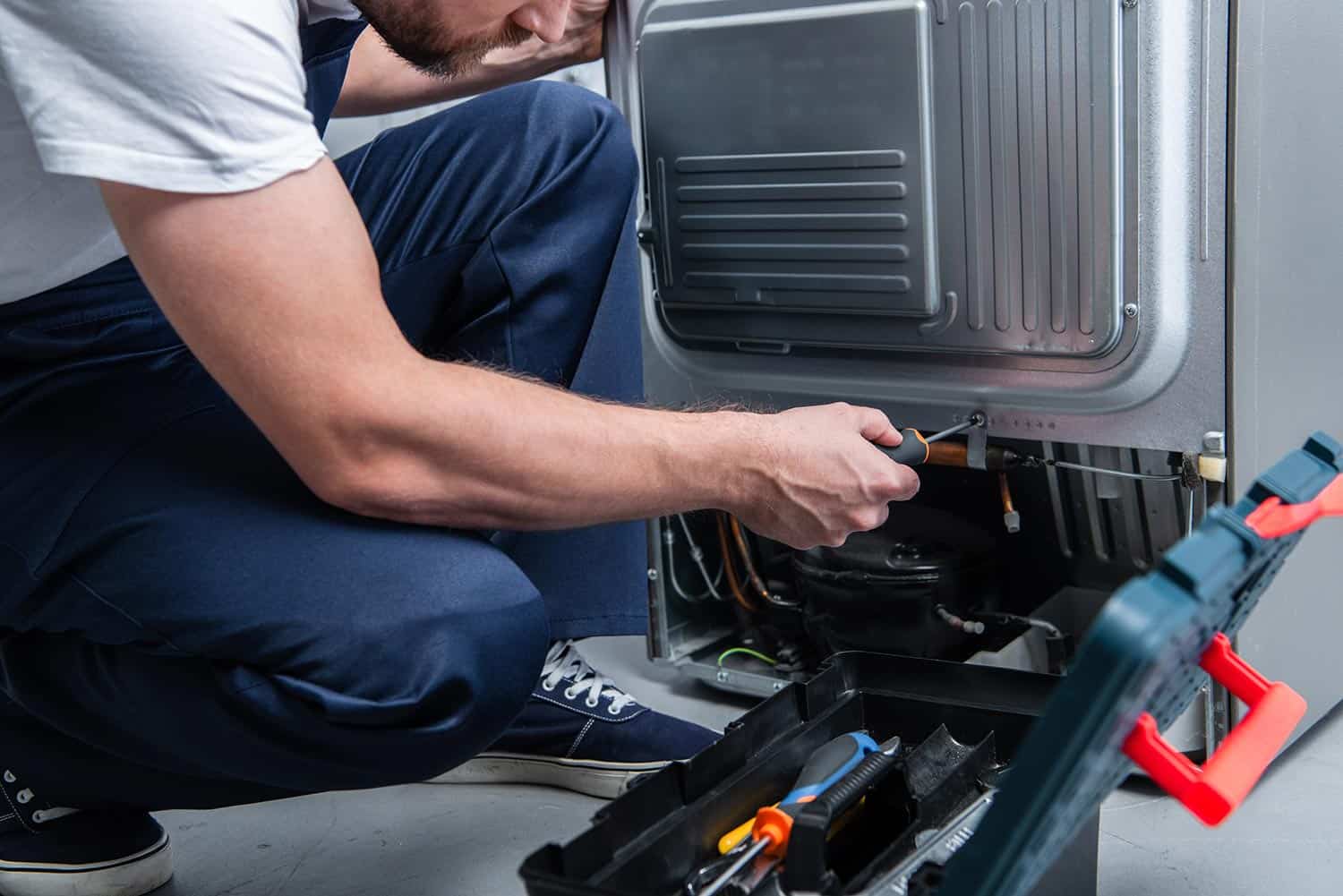
Yes, if your drain tube is defective or becomes damaged, you will need to replace it. Although this process varies depending on the brand of fridge you have, it should be as easy as reaching out to the manufacturer and ordering a new part.
Typically, you can expect to spend around $40 for a new drain tube and anywhere from $50-$150 per hour to hire a professional to install it. Of course, you can try to replace the drain tube yourself, although we only recommend this if you have experience with refrigerator repairs.
To Wrap It Up
Whether you just started to notice water leaking inside your fridge or deal with this often, there are ways to fix it. From what we found, the best way to stop water leaking in a refrigerator is to make sure its defrost drain is clog-free and unobstructed.
You might also want to try putting hot water down the drain in your fridge if water starts to pool inside or around it, so that's another idea to consider. Again, this should be a simple fix, so there's no need to disassemble your entire appliance.
Regardless, remember to check its defrost drain regularly, and don't be afraid to reach out to the manufacturer to order a new drain tube if needed.
Made it to the end? Check out these helpful related kitchen posts below!
Can You Place A Refrigerator In The Corner Of The Kitchen?
How To Adjust The Temperature On A Danby Refrigerator
How Much Weight Can A Refrigerator Shelf Hold?

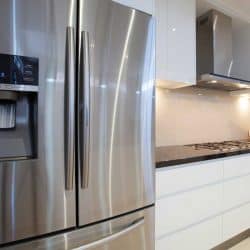
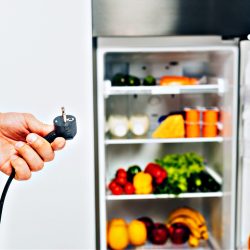
![A freezer accumulating ice on the side, How To Defrost Kitchenaid Freezer [French Doors Or Bottom]?](https://kitchenseer.com/wp-content/uploads/2022/07/A-freezer-accumulating-ice-on-the-side-250x250.jpg)
